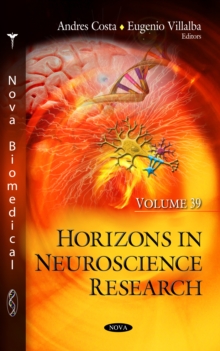
Horizons in Neuroscience Research. Volume 38 PDF
Edited by Costa Andres Costa
Part of the Horizons in Neuroscience Research series
Description
Physiotherapy and rehabilitation applications in neurological diseases are important for the treatment of the disease.
The basic principle of physiotherapy and rehabilitation is to determine the needs of the patient.
As such, the authors discuss the evaluation of the motor functions of neurological diseases for upper and lower extremities separately, as well as sensorial functions and cognitive functions.
Next, a literature review draws attention to studies in which sex was a controlled variable, and presents data regarding sexual dimorphism in a range of aspects developed after brain injury.
It is possible to document the accomplishments of different cell death mechanisms and varying degrees of inflammatory response depending on the sex, as well as the distinct susceptibilities of the sexes in terms of mechanisms of cell damage.
Additionally, summary of techniques and indications related to cerebrovascular bypass surgery for aneurysmal subarachnoid hemorrhage cases is provided, maintaining that cerebral revascularization procedures should be further developed by neurosurgeons as they remain the only option of treatment for a significant number of patients.
The authors review their extensive experience with indocyanine green video-angiography and FLOW 800 analysis software during the surgical removal of central nervous system tumors; in particular, they identified 5 possible applications of indocyanine green video-angiography and FLOW 800 in this field.
Data is presented showing the reciprocity between the brain angiotensin II system and amphetamine exposure in the development and expression of behavioral, neurochemical and glial alterations.
Particularly, this collection explores how the neuroadaptative responses and neuroinflammation evoked by the psychostimulant and depending on AT1 receptors that might resemble some features linked to different brain disorders.
Lastly, a brief overview of the investigational history in research work on receptor/G-protein coupling is presented.
Subsequently, the most recent experimental results in the re-establishment of [35S]GTPyS binding/immunoprecipitation assay are described.
Information
-
Download - Immediately Available
- Format:PDF
- Pages:231 pages
- Publisher:Nova Science Publishers, Inc.
- Publication Date:19/08/2020
- Category:
- ISBN:9781536172133
Information
-
Download - Immediately Available
- Format:PDF
- Pages:231 pages
- Publisher:Nova Science Publishers, Inc.
- Publication Date:19/08/2020
- Category:
- ISBN:9781536172133










